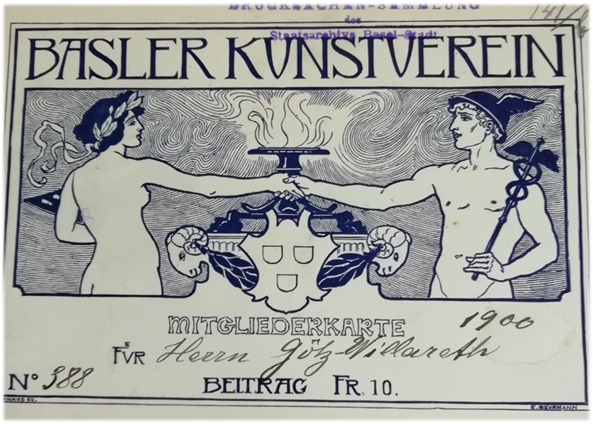On the occasion of the « Historiales 2020 », Sinergia PhD candidate Émilie Widmer organized a panel with Louis Deltour (University of Geneva) and Fiona Vicent (University of Basel) reflecting on the topic of “the legitimation of elites”, exploring the practices, means and strategies implemented by the elites to distinguish themselves from other groups or classes. In this context, her contribution is a preliminary research to one of her thesis chapters and investigates how the Fine Art Societies of Basel and Zurich worked as key places of sociability for the finest local elites of these cities between the end of the 19th century and the first half of the 20th century. Using sources from the archives of the Schweizer Kunstverein, the Zürcher Kunstgesellschaft and the Basler Kunstverein, her work aims more precisely to shed light on the practices of exclusion and inclusion implemented by the Basel and Zurich Fine Arts Societies’ members to legitimize their elite status. These organisations were indeed generally very selective in their admission of new members, employing a system of heavy financial contributions and peer-mentoring to be able to get in. Such a system ensured an effective filter, that only allowed the elite to enter the societies and thus undeniably participated to the creation of class cohesion among them.
Drawing on the concepts of “exclusivity” and “segregated inclusion” developed by Accominotti et al. (2018) in their research on the New-York Philharmonic, her analysis underlines two important elements for a better understanding of the mechanisms of the elites’ privileged access to high culture. Firstly, the fact that cultural exclusivity allows elites to distinguish themselves from other social groups and gives them the opportunity to develop a vast network of contacts sharing the same social status. Secondly, however, the fact that this high culture cannot exist without a certain inclusion of other social groups in elite practices. The latter is truly essential in the process of legitimization of the elite, for the pre-eminence of bourgeois culture must be recognized by all in order to impose itself. This contribution however emphasizes how a practice, even when it appears inclusive, actually hides effective mechanisms of exclusion that ensure the persistence of bourgeois hegemony, thus highlighting a phenomenon of “segregated inclusion” taking place in these Fine Art Societies.
